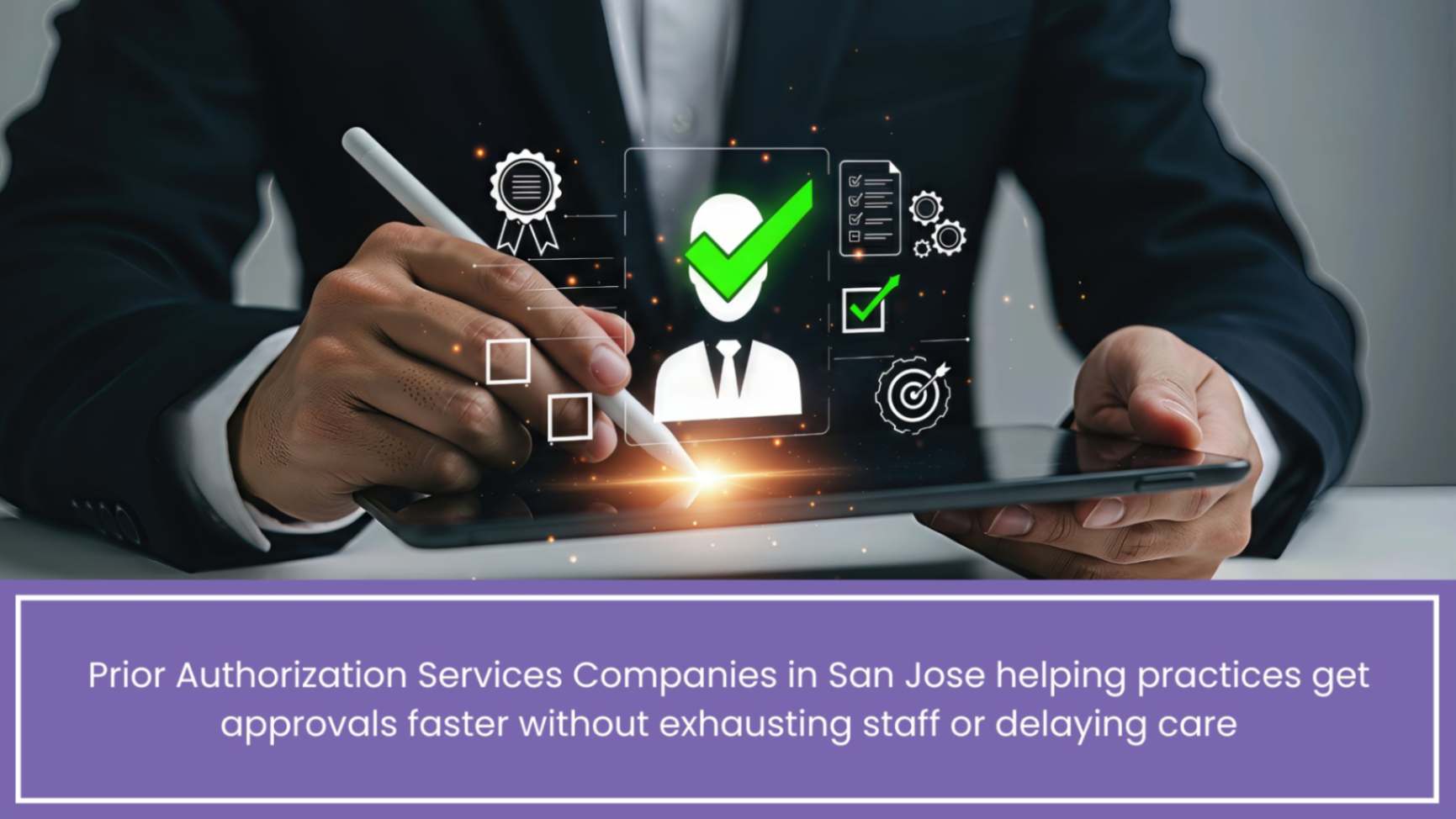Biggest RCM Challenges Healthcare Providers Face in 2025
Revenue cycle management, or RCM, is essential for healthcare success, but in 2025, providers are up against growing hurdles. The Biggest RCM Challenges Healthcare Providers Face in 2025 include code complexity, staffing shortages, compliance risks, high claim denials, and prior authorization delays. On top of that, overworked teams struggle with outdated billing software and the financial strain of rising patient expenses. This blog dives into the most pressing RCM issues today, backed by facts, figures, and emerging trends. It also highlights practical ways to overcome them and shows how providers can turn billing difficulties into growth opportunities by partnering with reliable experts like Practolytics.
Table of Contents
What Are the Biggest Challenges Healthcare Providers Face in RCM Today?
Healthcare Revenue Cycle Management services keep healthcare businesses running. It handles patient sign-ups through final payments. When RCM works well, doctors get paid faster, patients see fewer billing problems, and rules are followed. But when RCM fails, claims get rejected, money comes late, and costs rise.
In 2025, RCM challenges are tougher. New government rules are stricter. Insurers use smart software to check claims. Patients want clear cost details. Hospitals and clinics, meanwhile, are dealing with a lack of employees and increased costs.
What are the main RCM challenges of today, and how can leaders in the healthcare industry overcome them? Here’s a clear look.
Why RCM Challenges Are More Serious in 2025
RCM has always been tricky. Now, three big changes are making it tougher:
Tighter Rules
Health plans check claims more closely. Small mistakes cost money.
Tech Demands
Payers use software to find errors. If you’re slow to adapt, you lose.
Patient Focus
People want clear bills upfront. They’re more involved in costs.
Some key numbers show why managing medical bills matters right now:
- The American Medical Association found 15% of claims get denied at first. Most denials happen because of medical coding mistakes or missing approvals.
- The Healthcare Financial Management Association reports that each denied claim costs providers $118 to fix.
- A Black Book survey says 78% of providers plan to outsource billing work by 2026. Why? Because billing rules keep getting more complex.
Here’s why these facts matter for your business:
- Denials drain staff time and cash flow.
- Fixing claims eats into your profits.
- Outsourcing becomes a smart move when rules overwhelm your team.
Good billing keeps your practice healthy. These trends show it’s time to look at your process.
Challenge 1: High Claim Denial Rates
Claim denials are the top challenge in healthcare revenue management. They happen for common reasons:
- Wrong or missing codes
- Incomplete patient details
- Eligibility problems
- Late approvals
- Missed deadlines
Denials hurt cash flow and add costs. Teams waste time fixing errors, resending claims, and calling insurers.
2025 Trend: Payers now use smart denial systems. Tiny coding mistakes trigger rejections. Providers need tools that find errors before claims are sent.
Challenge 2: Prior Authorization Delays
Prior authorization is a major pain point for healthcare providers today. Insurers now require approval for more treatments than ever—especially high-cost services like imaging scans, cancer drugs, and complex surgeries.
According to a 2024 MGMA survey, 89% of providers saw these requirements increase last year alone.
Two major issues result from this: patients have to wait longer for care, and providers have to wait longer to be paid.
Automation tools are expected to expedite approvals by 2025. However, a lot of practices still do this by hand, which slows down everything.
Challenge 3: Coding and Compliance Complexity
Medical coding drives revenue. Codes like CPT, ICD-10, and HCPCS change often. Medicare updates rules yearly, too.
Bad coding hurts your income. AAPC data shows 35% of claim denials come from coding mistakes.
High-risk areas like cardiology and orthopedics face more audits.
Here’s the shift: By 2025, AI tools will suggest codes from doctors’ notes. Your coders then check them. Together, they cut errors and audit risks.
This keeps revenue flowing smoothly.
Challenge 4: Staffing Shortages and Burnout
The healthcare sector has a staffing problem. Many providers struggle to fill roles like billing, coding, and admin support. Good coders are hard to find, and they often leave quickly. Training replacements costs time and money.
A recent Becker’s Healthcare survey shows 60% of providers face hiring challenges for revenue cycle roles.
Burnout hurts staff accuracy and slows cash flow.
Looking ahead: More providers plan to outsource coding/billing tasks or use tech tools to help small teams work smarter.
Challenge 5: Patient Payment Responsibility
Patients now pay more for healthcare because of high-deductible plans. Getting payments from patients is tougher than getting them from insurance verification companies.
According to data, between 2022 and 2024, patient costs increased by 11%.
Many hospitals and doctors deal with patients who are unable to pay their bills on time or at all because they are too expensive.
What’s changing: More providers are utilizing upfront, transparent cost estimates and digital payments. Patients can pay more quickly and easily as a result.
Challenge 6: Slow Technology Adoption
Many practices use old billing systems. This forces staff to do manual work—checking patient coverage, fixing denied claims, and tracking payments. It’s slow and causes mistakes.
A recent report shows 40% of small practices still use outdated tools.
Here’s the shift: More clinics are switching to cloud-based billing software that connects with patient records. This gives real-time payment tracking, denial alerts, and easy reports. It saves time and cuts errors.
Challenge 7: Rising Compliance Risks
Regulators are stepping up audits. CMS is cracking down on coding errors and medical necessity gaps. Even minor mistakes can lead to major fines.
Last year, CMS recovered $5 billion in overpayments. That figure will likely climb in 2025.
Providers must also follow tighter HIPAA rules for patient data.
Here’s the solution: Audit-ready coding logs and automated compliance tools are cutting risks for providers.
Challenge 8: Financial Pressures and Cost Control
Operating costs keep climbing—things like staff pay, tech updates, and compliance tools cost more. Meanwhile, payments from insurers aren’t rising as fast.
Moody’s reports hospital costs jumped 8% in 2024, but revenue only grew 4%. This squeeze forces RCM teams to chase fewer errors and recover every dollar possible.
In 2025, healthcare providers will use analytics to track denial trends, measure insurer performance, and keep an eye on cash flow.
Industry Updates and News
AI in Revenue Cycle Management
More companies now use AI tools for billing. These tools spot mistakes, suggest better codes, and warn about payment denials.
Clearer Billing Rules
New government rules demand simpler paperwork and faster digital filing. Healthcare providers must act fast.
Pay for Results, Not Services
New payment models reward good patient outcomes. This means accurate records and coding matter more than ever.
Outsourcing on the Rise
Experts predict that the outsourcing of billing work will grow 10% yearly through 2030. Many practices now partner with specialists.
Overcoming RCM Challenges: Best Practices
- Invest in Automation: Make use of AI to automatically manage denials, eligibility checks, and coding.
- Enhance Records: Teach your staff to accurately record patient information each and every time.
- Smart Outsourcing: Assign coding or billing duties to dependable professionals.
- Keep track of key numbers: Keep a careful eye on denial rates, late payments, and patient payments.
- Engage Patients: Provide upfront cost estimates, flexible payment schedules, and online access.
- Keep Up to Date: Stay informed about changes to insurance rules and Medicare updates.
Conclusion: Partnering with Practolytics for RCM Success
Denials, authorizations, compliance, staffing, and patient payments are among the ongoing problems in healthcare medical billing services. In 2025, they are becoming increasingly complex. Providers must update their billing strategies immediately.
Practolytics is useful.
In order to reduce denials, expedite payments, and maintain compliance with evolving regulations, we collaborate with providers. Our method combines knowledgeable human assistance throughout the whole billing process with intelligent AI tools.
Here’s how we deliver:
- Smarter Coding: AI-assisted coding backed by human review.
- Easy EHR Integration: Real-time claim tracking and alerts.
- Denial Solutions: Quick fixes with root-cause analysis.
- Patient Payments: Digital tools to boost collections.
- Compliance Confidence: Audit-ready logs and instant CMS updates.
With Practolytics, providers spend less time on billing battles and more time with patients.
Turning billing challenges into growth opportunities.
ALSO READ – Essential Tips for Error-Free Orthopedic Billing and Coding: Boost Your Practice’s Financial Health
Talk to Medical Billing Expert Today — Get a Free Demo Now!






